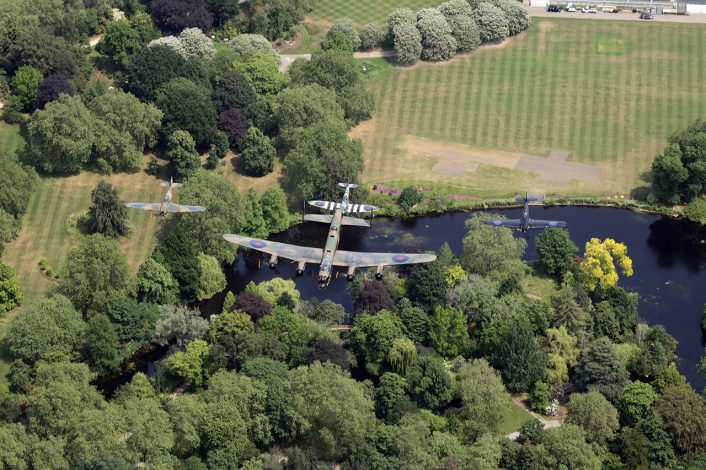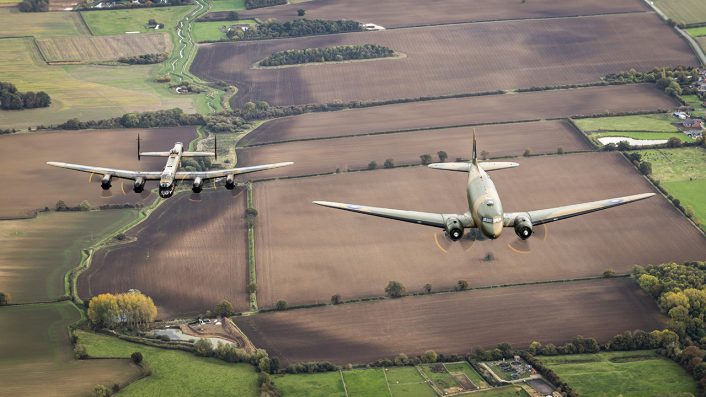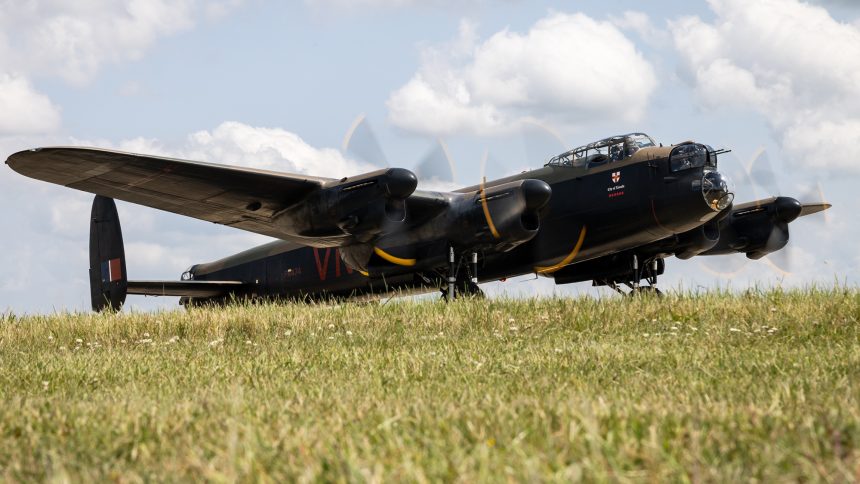The Battle of Britain Memorial Flight’s Avro Lancaster has flown to Duxford to begin a planned period of maintenance that will see it miss the 2026 display season.
Avro Lancaster PA474 was built in 1945 and delivered too late to see use in the Second World War, but has established itself since 1973 as the heart of the Royal Air Force’s Battle of Britain Memorial Flight (BBMF). The aircraft, also known as ‘The City of Lincoln’, is a regular centrepiece for national flypasts over London and performs at airshows across the UK during each year’s summer display season – usually flanked by the BBMF’s Spitfires and Hurricanes.
To ensure the long term sustainability of operating this precious aircraft – one of only two airworthy Lancasters globally – a major maintenance overhaul is required roughly every eight years. Led by experts at the Aircraft Restoration Company, based at Duxford Aerodrome, PA474 will be completely stripped down and rebuilt during a process that is expected to last at least 18 months.

While the Lancaster is unavailable, the BBMF’s Douglas C-47 Dakota will step up and cover PA474’s usual responsibilities. The Dakota itself has recently returned to flight following a longer than expected overhaul period that saw it spend three years at Duxford. As well as being an important part of the RAF’s history in itself, the BBMF’s operation of a Dakota additionally enables aircrew training for a multi-engine tailwheel aircraft type – otherwise not operated by the RAF – without using up the extremely valuable flying hours of their Lancaster.
The BBMF’s Dakota, serial ZA947, was originally delivered to the U.S. Army Air Force in 1942 before a swift transfer to the Royal Canadian Air Force (RCAF) under a lend-lease agreement. ZA947 was transferred to the RCAF’s European forces in 1965 and served there until 1969, at which point it was declared as surplus and fell into the use of the Royal Aircraft Establishment (RAE) in Britain. Assigned the British serial number KG661, this was later realised to have been in error – that serial number having previously assigned to a subsequently destroyed aircraft. The aircraft was given the more contemporary ZA947 serial in 1979 and joined the BBMF in 1993.
As part of ZA947’s overhaul, the aircraft was repainted into a new colour scheme representative of an RAF Dakota serving with 31 Squadron in the Pacific theatre of the Second World War. As such, the aircraft now carries the RAF’s Far East Command style roundel, featuring two shades of blue and no central red dot – developed to avoid misidentification as Japanese aircraft.
Our Dakota spent the evening at @RAFNortholt, but now she’s on her return journey home 👀✈️ #Dakota #ZA947 pic.twitter.com/X6iLlwW07Q
— RAF BBMF (@RAFBBMF) September 19, 2025
Squadron Leader Paul Wise, Officer Commanding of the BBMF and one of the pilots for both the Lancaster and Dakota, said the Dakota was the flight’s “unsung hero”. Of the Lancaster’s maintenance programme, he says “We do want to keep them flying indefinitely.” He added “In order to do so, they have to be taken offline from time to time to go through an in-depth maintenance procedure for a major servicing. It tends to be every eight years or so and it will be stripped down, so there’s nothing new but fingers crossed at a speedy return.”
Several million people across the UK turn out to see the BBMF’s aircraft at various events each year. It is funded centrally by the Ministry of Defence, but also receives support from public donations via supporters’ groups. Most personnel on the flight give their time in addition to regular Royal Air Force duties, with only a small core of full time crew providing the backbone of the team.
Historic RAF Formation Flight
On Oct. 23, taking advantage of the brief period where both the Lancaster and Dakota were available, the Royal Air Force performed a special formation flight with both aircraft flying side by side, led by a Spitfire and an active duty Airbus A400M Atlas C1. All aircraft, aside from the Spitfire, were flown by aircrew who actively serve with or have served with the RAF’s 30 Squadron, one of two frontline Atlas units.
Commemorating a legacy, celebrating duty. ✈️
The iconic BBMF Spitfire, Lancaster and Dakota soared in a historic formation with the RAF A400M, uniting past and present. pic.twitter.com/zTvc9q1x29
— Royal Air Force (@RoyalAirForce) October 28, 2025
Squadron Leader Wise, who was at the controls of the Dakota for the formation, said: “This event provided a remarkable opportunity to bridge the RAF’s illustrious past with its dynamic present-day front-line roles. Many of the responsibilities and values upheld by the RAF today have their roots in the pioneering efforts of the courageous Second World War generation. Their dedication and sacrifice laid the foundation for the modern force we see today. By commemorating their legacy, we also celebrate the RAF’s ongoing commitment to safeguarding our Nation, honouring the past while looking forward to the challenges and responsibilities of the future.”










